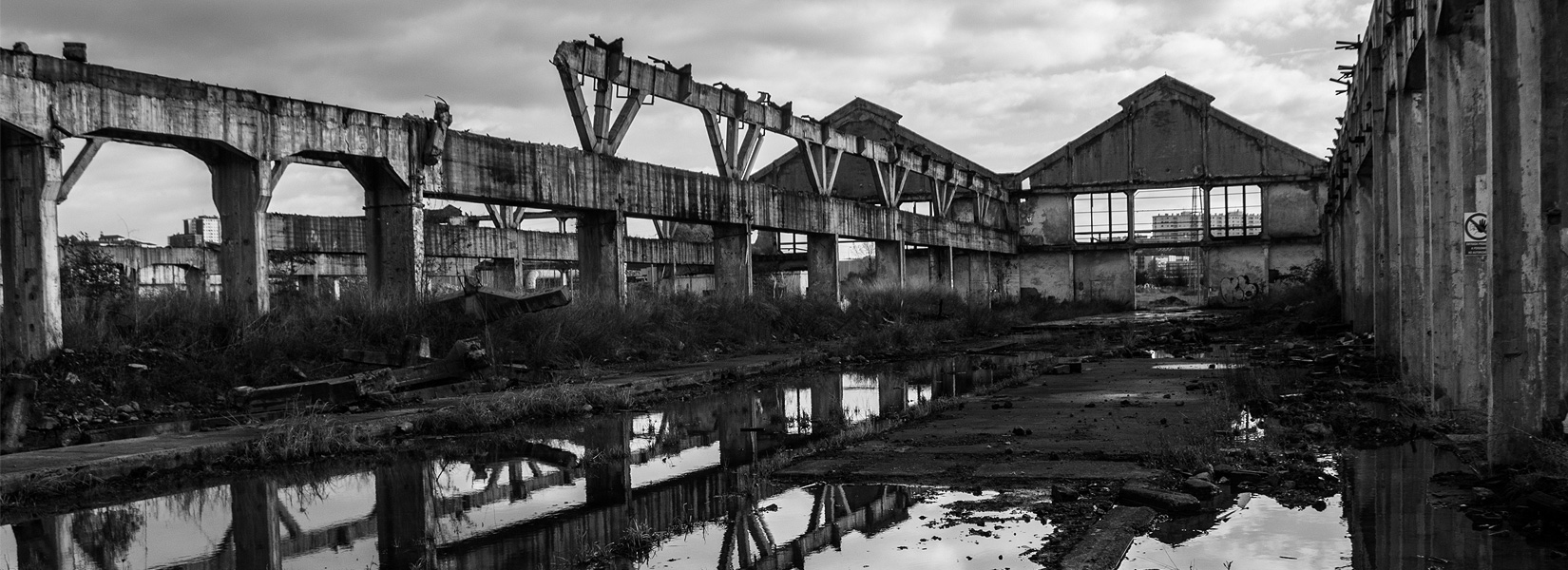The place is big, very big. While the building is nearly 200,000 square feet, the site, meanwhile, is over than 430,000 square feet in an agricultural area of Saint-Jean-sur-Richelieu. For those interested, the site is for sale and the current...
The abandoned Babcock & Wilcox plant of Sestao
The former railway plant in the Galindo valley
The history of the Babcock & Wilcox in the Galindo valley began during the First World War when the difficulties of the Compañía de los Caminos de Hierro del Norte de España will result in the sale of the plant to the Babcock & Wilcox company, today specializing in energy technologies.
Located in Sestao, near Bilbao, the industrial complex is specialized in the manufacture and repair of industrial locomotives. Among the contracts awarded to the company, Babcock & Wilcox is responsible for the repair of 173 locomotives damaged during the Civil War that divided the country for more than three years. It will also be the last company in Spain to build steam locomotives (1961).
While more than 5,250 employees was working there at its peak in 1976, the oil crisis, which began in the U.S. in 1971, will join Spain at the end of the decade and will cause the beginning of the end of the huge Babcock Wilcox industrial complex in Sestao.
The central government will try somehow to save an industry that was the heart of one of the most important sectors of the region, but unfortunately, the site will be closed in 1992.
The Babcock & Wilcox around the world
While its headquarters are located in Charlotte, North Carolina, USA, the Babcock & Wilcox still operates several plants around the world including Canada, China, Denmark, Sweden, Mexico, India and many more. More than 12,000 people work for the company. Founded in 1867 by Stephen Wilcox and George Babcock, the company has also left behind numerous restructuring plans that resulted by several abandoned factories, including one in Montreal that you can visit on Urbex Playground.
Related content
I was asked to photograph it (legally) by the Trust group thats restoring the island,which was a life long dream of mine.
The history of the island began in 1900 when Francis Bannerman purchased the island. Located in the Hudson River near...
From the outside, there is no indication that the plant is abandoned. No window is doomed and there is no "for sale" sign. Even the structure of the building is still in very good condition. I myself had doubts when I heard about it for the first...
Built in the early twentieth century, the former Canada Malting plant has a dozen gigantic silos of 37 meters high. The oldest was built in 1905. Hundreds of employees worked there after the Second World War, until the closure of the factory at...






















